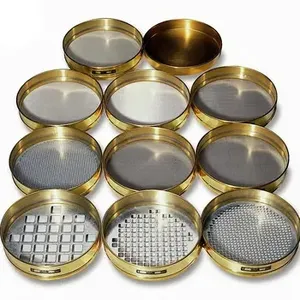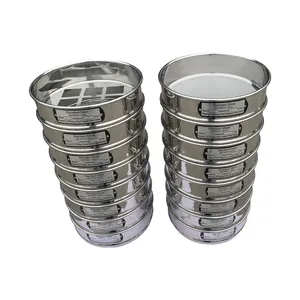
Soil Flour Mesh Standard Laboratory Test Sieve/soil Sieve/sand Sieve Stainless Steel 10 20 50 100 150 200 250 500 600 Micron









Aggregate test sieves are essential tools in the classification and assessment of particulate materials used across various industries. These sieves facilitate sieve analysis of coarse aggregate and sieve analysis of fine aggregate, critical processes in determining the size distribution of materials such as sand, gravel, and crushed stone. The analysis is pivotal in ensuring consistency and quality in construction and industrial applications.
The aggregate sieve comes in several types, each designed to perform specific tasks within material separation. The coarse aggregate sieve is robust, designed to filter out larger particles, while fine aggregate sieves are used for finer materials. In mining, sieve analysis test for coarse aggregate is a common practice, whereas in food production, finer sieves are used to ensure the purity and texture of the final product.
An aggregate sieve test is characterized by its mesh size, which defines its ability to separate particles of different sizes. The sieve for coarse aggregate typically features larger openings, whereas sieves for fine aggregate have much smaller mesh sizes. The construction of these sieves is designed to withstand the mechanical forces during the shaking or vibrating process in a sieve analysis test of aggregate.
Manufactured from materials such as stainless steel or brass, aggregate test sieves offer durability and corrosion resistance. The flakiness sieve is a specialized type that helps in determining the flakiness index of aggregates, which is crucial in the construction industry for assessing the compatibility of aggregates for concrete and asphalt mixtures.
Selecting the appropriate sieve requires understanding the specific needs of the task at hand. For instance, 40mm aggregate sieve analysis demands a sieve with an opening size that will accurately separate particles around that dimension. Similarly, a fine aggregate sieve analysis test requires a sieve fine enough to capture minute particles while allowing others to pass through.
Reliable aggregate sieving equipment adheres to standards such as AASHTO sieve analysis, ensuring that the sieve analysis provides consistent and repeatable results. This compliance is crucial for industries where material specifications are strictly regulated, and quality control is paramount.